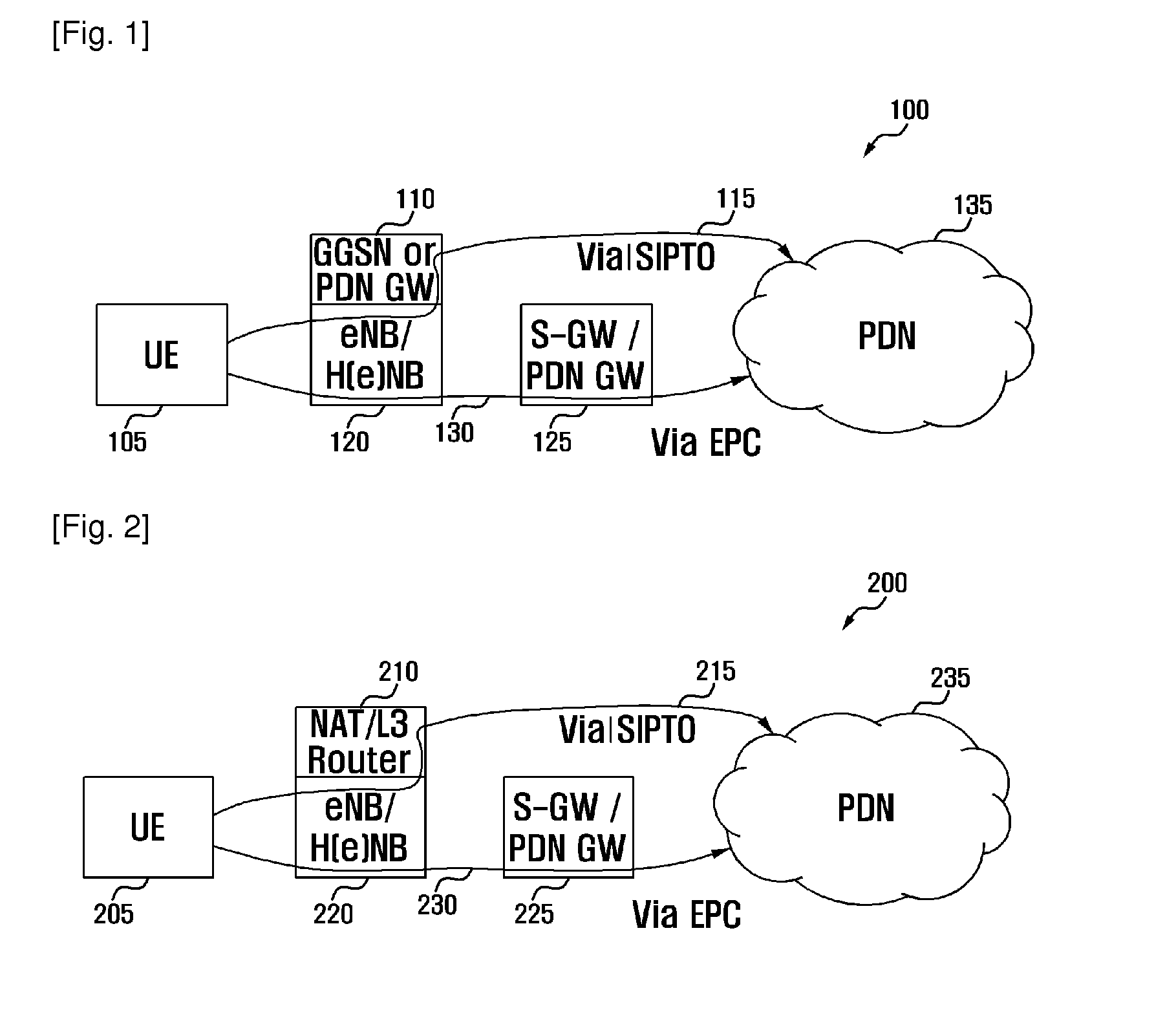Network elements, integrated circuits and methods for routing control
a network element and integrated circuit technology, applied in the field of network elements, integrated circuits and routing control methods, can solve the problem of no chance of mobility of connections from the sipto to any non-sipto access
- Summary
- Abstract
- Description
- Claims
- Application Information
AI Technical Summary
Benefits of technology
Problems solved by technology
Method used
Image
Examples
Embodiment Construction
[0036]Examples of the invention will be described in terms of an opportunistic and transparent mechanism for utilising a selective IP Traffic offload (SIPTO) thereby supporting direct exchange of IP data between a UE and an external PDN. In particular, a UE is able to access a PDN using a SIPTO connection by means of radio access node, such as an eNB, or H(e)NB, that is capable of performing SIPTO. The opportunistic and transparent routing control for SIPTO utilises a first router that is coupled to the radio access node and a second router that is located in the routing path of either the PDN network or the ISP Core, with knowledge that another route (via SIPTO) exists that bypasses the home (Operators core network transport) link. However, it will be appreciated by a skilled artisan that the inventive concept herein described may be embodied in any type of IP data network where different routing options can be employed.
[0037]Examples herein described enable the same PDN connection...
PUM
 Login to View More
Login to View More Abstract
Description
Claims
Application Information
 Login to View More
Login to View More - R&D
- Intellectual Property
- Life Sciences
- Materials
- Tech Scout
- Unparalleled Data Quality
- Higher Quality Content
- 60% Fewer Hallucinations
Browse by: Latest US Patents, China's latest patents, Technical Efficacy Thesaurus, Application Domain, Technology Topic, Popular Technical Reports.
© 2025 PatSnap. All rights reserved.Legal|Privacy policy|Modern Slavery Act Transparency Statement|Sitemap|About US| Contact US: help@patsnap.com



